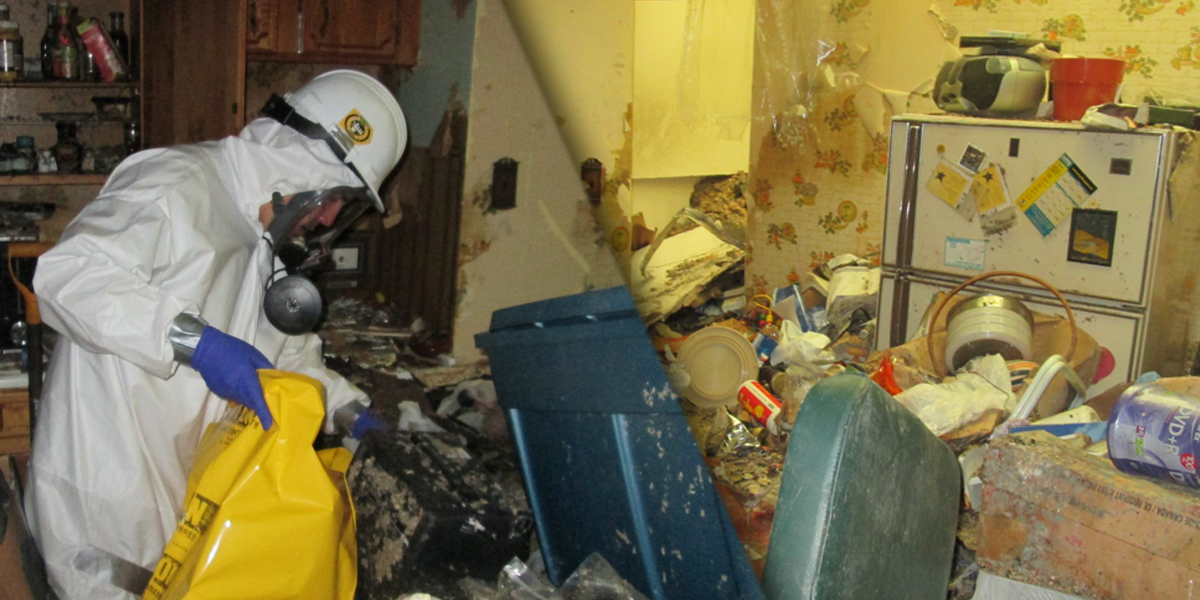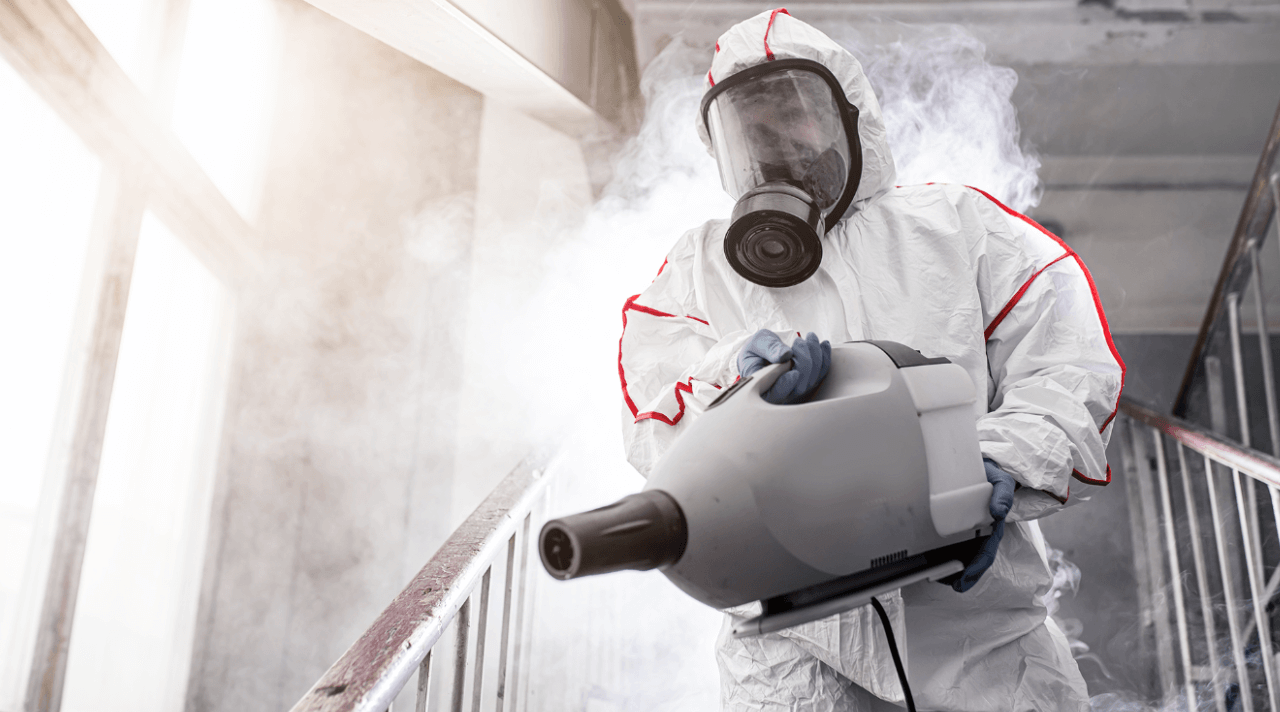Clandestine Lab Cleanup: Comprehensive Purification for Hazardous Sites
Clandestine Lab Cleanup: Comprehensive Purification for Hazardous Sites
Blog Article
Professional Biohazard Cleansing and Decontamination for Blood, Bodily Fluids, and Hazardous Materials
The possible health and wellness threats linked with exposure to biohazards emphasize the essential need for meticulous handling and extensive cleanup. As we browse the elaborate landscape of biohazard clean-up, comprehending the subtleties of laws, compliance, and the customized equipment at play ends up being critical in ensuring a comprehensive and risk-free purification process.
Wellness Threats of Biohazard Direct Exposure
Exposure to biohazards postures substantial health and wellness risks that can result in extreme effects for individuals and communities alike. Biohazards include a large range of organic substances, consisting of blood, physical fluids, mold and mildew, germs, viruses, and other possibly transmittable products. When people enter into call with these biohazards, whether with accidents, incorrect handling, or environmental exposure, they encounter the risk of contracting major illnesses or conditions.
Among the primary wellness dangers related to biohazard exposure is the transmission of contagious illness. Bloodborne pathogens such as HIV, hepatitis B and C, and various microorganisms can be existing in biohazardous materials, posturing a direct danger to human wellness. Inhaling airborne biohazards like mold and mildew spores or coming into call with infected surfaces can likewise bring about respiratory problems, allergies, and other adverse wellness impacts.
Furthermore, biohazard exposure can have lasting wellness ramifications, with some diseases showing up years after the preliminary contact (Blood Cleanup). For that reason, it is critical to prioritize appropriate biohazard cleaning and purification to minimize these wellness dangers and make certain the safety and security of neighborhoods and individuals

Specialized Training for Biohazard Cleanup
When it pertains to managing biohazard cleaning successfully and securely, specialized training plays a basic function in ensuring appropriate decontamination procedures are adhered to. Biohazard cleaning requires certain expertise and skills to effectively alleviate dangers related to bloodborne pathogens, physical fluids, and hazardous materials. Specialists learnt biohazard clean-up undertake extensive instruction on just how to safely deal with, eliminate, and deal with biohazardous products to avoid contamination and exposure.
Specialized training for biohazard cleanup covers an array of important topics, including appropriate personal protective equipment (PPE) usage, bloodborne microorganism awareness, decontamination techniques, and contaminated materials disposal procedures. Individuals trained in biohazard clean-up are outfitted with the required experience to examine contamination degrees, identify possible hazards, and implement appropriate cleaning treatments in conformity with governing standards.
Continual training and education and learning are paramount in the field of biohazard cleaning to stay updated on the most recent purification innovations, security procedures, and policies. By spending in specialized training, biohazard clean-up professionals can successfully react to emergency situation cleaning circumstances and safeguard both public health and the setting.
Value of Proper Decontamination Techniques
Utilizing correct purification methods is crucial in biohazard cleaning to properly lessen and eliminate hazardous materials health and wellness threats. Efficient purification not only makes certain the elimination of visible traces of blood, physical crime scene cleanup kit fluids, and various other biohazards yet also targets unnoticeable pathogens that may pose severe wellness risks otherwise appropriately eradicated. By complying with rigorous purification protocols, educated experts can considerably reduce the danger of direct exposure to harmful bacteria, infections, and germs that can lead to diseases or infections.
Proper purification strategies entail making use of specialized equipment and disinfectants that are especially designed to counteract biohazards properly. Detailed cleansing and sanitation of infected areas are vital to prevent the spread of virus and make certain a risk-free atmosphere for passengers. Furthermore, the correct disposal of biohazardous waste adhering to decontamination treatments is vital in protecting against contamination of other surfaces or individuals.

Devices and Tools for Safe Clean-up
When dealing with blood, bodily liquids, or unsafe materials, biohazard cleaning experts depend on specialized gear to lessen direct exposure dangers and thoroughly decontaminate the affected location. Additionally, biohazard cleansing kits containing disinfectants, absorbent products, and biohazard bags are used to safely dispose and consist of of polluted items.
Advanced cleaning tools like hospital-grade disinfectants, HEPA-filtered vacuum cleaners, and fogging equipments are utilized to sterilize surfaces and eliminate biohazards properly. Specialized tools such as sharps containers and biohazard garbage disposal containers are made use of to securely take care of sharp items and biohazardous waste products. By making use of the right tools and devices, biohazard cleaning professionals can guarantee a detailed cleaning procedure that focuses on safety and minimizes wellness risks for both employees and owners of the afflicted space.
Laws and Compliance in Biohazard Cleansing
Appropriate adherence to guidelines and conformity requirements is extremely important in biohazard cleansing to make sure the security of both employees and the environment. Government companies such as OSHA (Occupational Security and Health Administration) and the EPA (Epa) have actually established particular guidelines for biohazard cleanup procedures to minimize wellness risks and ecological contamination. These guidelines cover a series of aspects consisting of the handling, transportation, and disposal of biohazardous products, as well as the needed training and safety devices needed for personnel associated with the cleaning procedure.
Biohazard cleaning business should stay up-to-date with these policies to guarantee that their operations satisfy the required safety requirements. Failure to web link follow these guidelines can lead to serious repercussions, including penalties, lawful action, and endangering the wellness of people and the atmosphere. By complying with strict policies and conformity procedures, biohazard cleaning companies can effectively minimize threats and ensure a secure and comprehensive cleaning procedure for all parties entailed.
Conclusion
To conclude, biohazard cleaning and decontamination require specific training, appropriate techniques, and adherence to laws. Direct find out here now exposure to blood, physical fluids, and harmful materials positions substantial wellness threats, making it essential to make use of the appropriate tools and tools for safe cleaning. By following rigorous protocols and guidelines, professionals can properly reduce the risks connected with biohazard direct exposure and guarantee the safety of both themselves and others.
As we navigate the complex landscape of biohazard cleaning, understanding the nuances of policies, conformity, and the specialized devices at play becomes necessary in making certain a detailed and safe decontamination procedure. (Blood Cleanup)
When it comes to managing biohazard cleaning effectively and securely, specialized training plays a basic duty in making certain correct purification treatments are adhered to.Utilizing proper decontamination methods is crucial in biohazard cleanup to properly minimize and eliminate harmful materials health and wellness risks. In addition, biohazard cleaning packages including anti-bacterials, absorbent materials, and biohazard bags are used to securely dispose and consist of of polluted products.
Federal government agencies such as OSHA (Occupational Security and Health And Wellness Administration) and the EPA (Environmental Defense Agency) have developed particular guidelines for biohazard clean-up procedures to decrease wellness dangers and ecological contamination.
Report this page